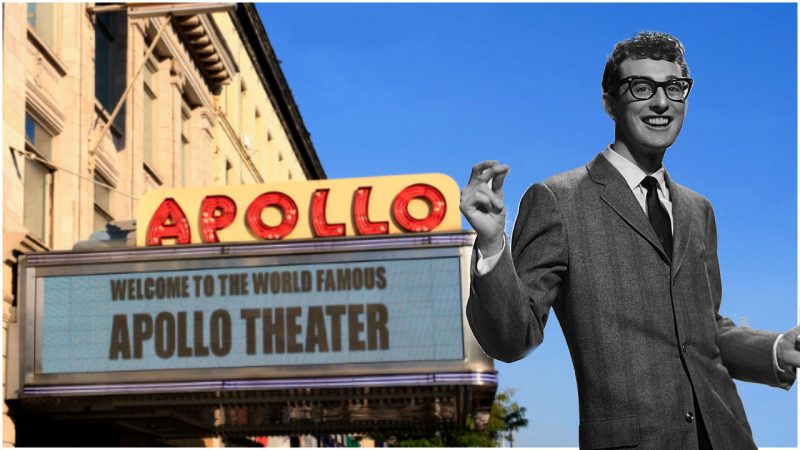Buddy Holly must have stood out when he first took the stage at the Apollo Theater on August 16, 1957. The theater guests, mostly African Americans, had come to the show that night expecting to enjoy the soulful sounds of Roy Hamilton, Shep and The Limelites, Clarence “Frogman” Henry and an R&B group called The Crickets.
So when a thin, baby-faced rock and roll Texan with thick glasses took the stage and started “hiccupping,” his way through the first song, the guests nearly booed him and his bandmates out of the theater.
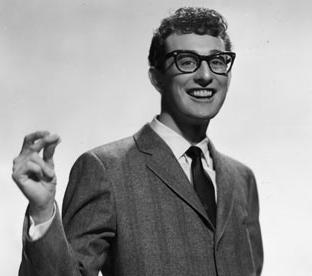
Not only were Buddy Holly & The Crickets they the first all-white band ever to take the stage at the Apollo Theater, the guests were expecting to hear a completely different act that night.
According to the official Apollo Theater website, the booking agent had made a minor error. He had mistaken Buddy’s all-white rock ‘n’ roll band with the R&B group simply called “The Crickets.”
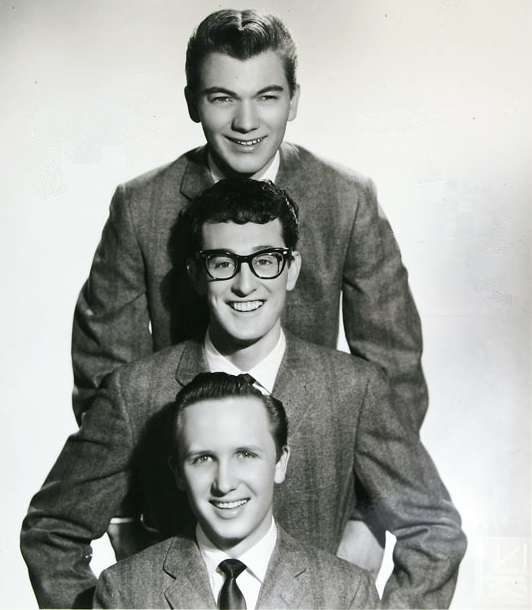
But as it turns out, this simple mistake would mark a historic moment for the Apollo Theater and for the new social phenomenon of rock ‘n’ roll music.
According to BlackPast.org, The Apollo Theater was opened in 1913 on 125th Street in Harlem, New York City, by burlesque theater operators Jules Hurtig and Harry Seamon.
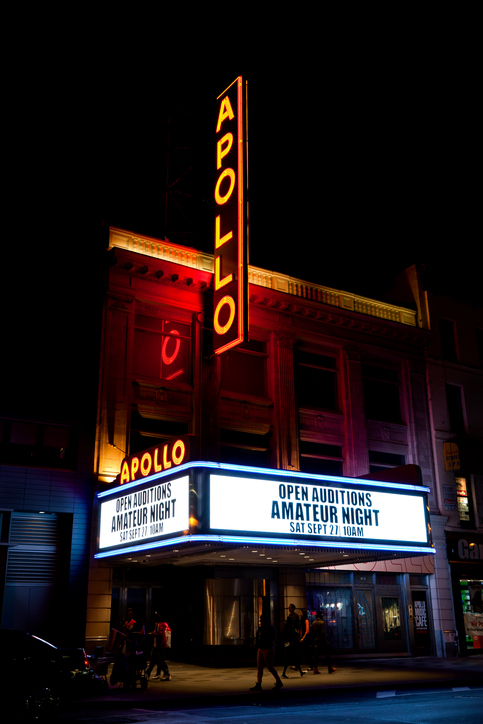
Right away, the theater played an important role in popularizing jazz, bebop, R&B, blues, soul, swing, gospel, and blues. It quickly became a beacon of African American culture, where black musicians, dancers, and comedians, from amateur to professional, would have the chance to showcase their talents.
By 1937, the Apollo had made another significant impact in the black community. According to Frank Schiffman of the Smithsonian Institution, the Apollo Theater became the largest employer of black theatrical workers in the United States and the only theater in New York City to hire blacks into backstage positions.
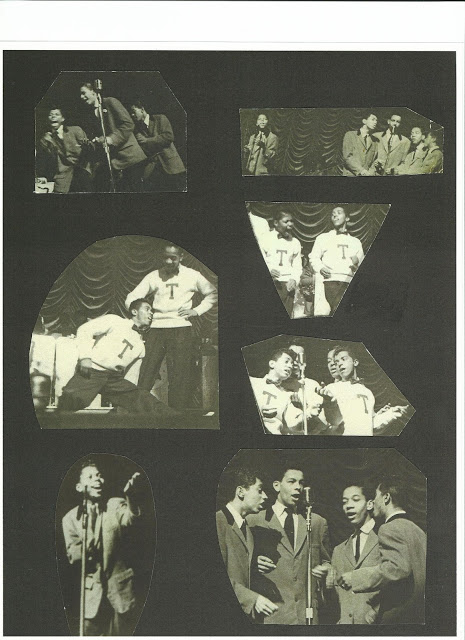
Sammy Davis, Jr. and Dinah Washington made their first performance during the 1930s. During the forties, the Apollo welcomed musicians like Lionel Hampton, dancers like Teddy Hale, Babe Laurence and Bunny Briggs.
The “Amateur Night” contests at the Apollo also became a huge opportunity for unknown talent, as they awarded prizes to up-and-coming artists like Sarah Vaughan and Ruth Brown.
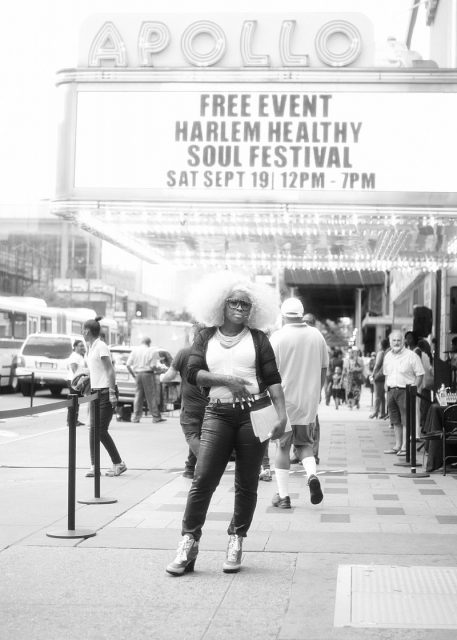
The theater also gained popularity with the USO (United Services Organizations) by reserving 35 daily tickets for soldiers. During the 1950s, it was bands like the Johnny Otis Rhythm & Blues Caravan followed by Josephine Baker, who made her debut at the Apollo in 1951.
The theater featured comedy acts such as Harlem’s Son of Fun, and even a dramatic play with Sidney Poitier called The Detective Story.
In 1955, two years before Buddy Holly showed up (without being officially invited actually) Thurman Ruth’s Gospel Caravan debuted at the Apollo and Amateur Night contestants included Dionne Warwick, the Esquires, Joe Tex, and even the godfather of soul himself, James Brown.
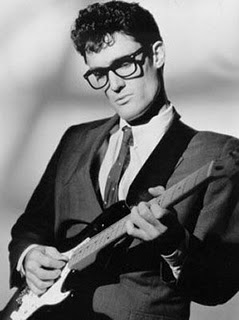
Even the young rock star Mick Jagger got his chance to come on stage for the first time when James Brown invited him up during a performance of “Get On Up.” Ironically, Jagger tried to run out and had to be forced on stage.
Fans pay tribute to Aretha Franklin at Harlem’s Apollo Theater
In 1955, Willie Bryant hosted the first broadcast of “Showtime at the Apollo,” which was taped before the live studio audience. It featured performances by “Big” Joe Turner, Sarah Vaughan, Herb Jeffries, the Count Basie Orchestra, dancer Bill Bailey and comedian Nipsey Russell.
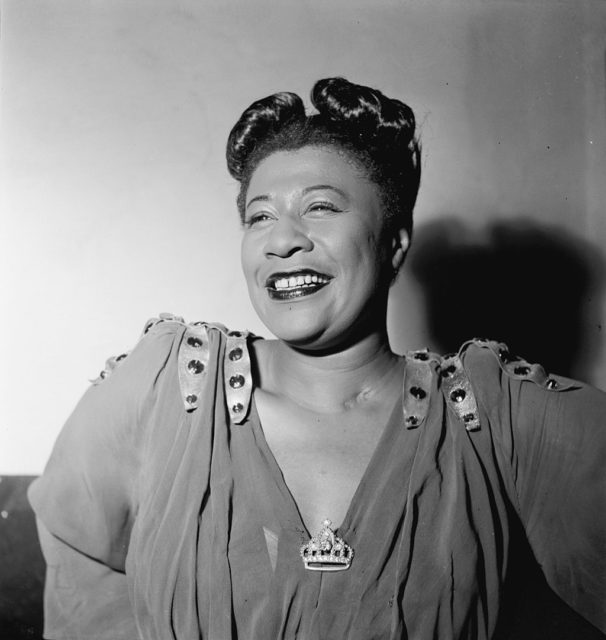
The Apollo was also one of the hottest spots for discovering new talent. Ella Fitzgerald debuted there (in response to a dare from her friends). She had planned to perform as a dancer, but changed her mind at the last minute and decided to sing instead. She won and would go on to join the Chick Webb Orchestra a year later.
Jimi Hendrix also won the amateur night contest on February 1964. That was the start of his stardom, and his first hit album “Are You Experienced” came only three years later.
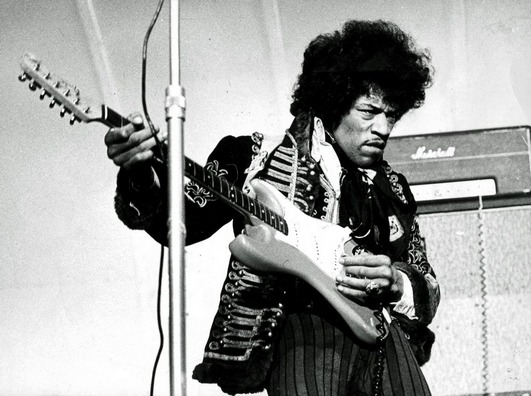
But perhaps the most important role the Apollo Theater played is in the social evolution of the 20th Century. When Buddy Holly & The Crickets showed up unexpectedly, without being invited, the crowd was disappointed. But by the end of their second song, people were cheering and dancing in the isles.
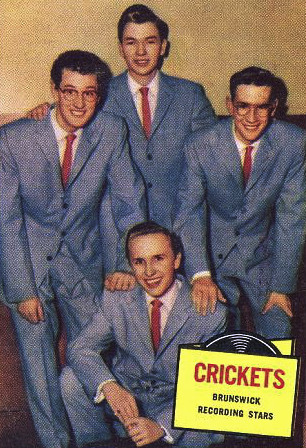
This was an important event in music history because rock ‘n’ roll was more than just music. It was a social and cultural movement which bound the world of white musicians and black musicians together.
Read another story from us: Marilyn vs. Liz: Battle of the Hollywood Bombshells
Buddy Holly’s show at The Apollo broke the “rules” which had kept these two worlds apart, and set a new standard for black and white musicians — a standard which would forever redefine popular music for all Americans.
